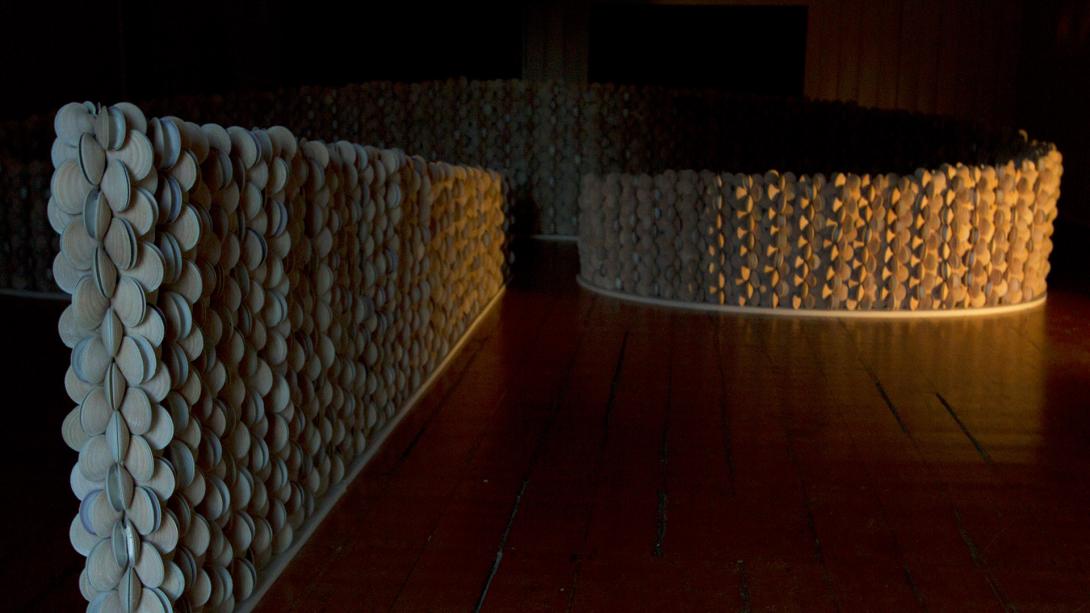Tungaru: The Kiribati Project
APT9
Established 2014 Aotearoa New Zealand
Led by: Chris Charteris
Artists: Mwemwetaake Ataniberu, Rareti Ataniberu, Louisa Humphry, Lizzy Leckie, Jeff Smith, Kaetaeta Watson
Armour Makers: Tetairua Ataniberu / Bateriki Nabeia
String Makers: Rakera Teitibora / Tiobia and Tiebane Boiaki / Koinawa, Tebunginako and Nuotaea Villages Abaiang, Kiribati
Support: Kiribati Australia Association And Manokan Kiribati.
Tungaru is a collaborative project inspired by the strong connections that New Zealand born artist Chris Charteris has made quite recently with his ancestral homeland and extended i-Kiribati family. Raised in a Pakeha family, Charteris initially believed he was of Māori heritage and trained as a carver. Later discovering he was of Kiribati and Fijian heritage reinforced his sense of the importance of ‘knowing who we are and where we come from’. The indigenous name for Kiribati is Tungaru, which means to gather together in a joyous way. Returning to this name for their project, Charteris and collaborating artists come together to celebrate the resilience of the islands’ ancestral culture as well as the contemporary concerns faced by its people. Drawing on knowledge held by community elders and museum collections and creating artworks in response to these, this group reflects on the nature of culture and identity in a global world.
Tungaru has also worked with the QAGOMA Children's Art Centre to develop a project for APT9 Kids.
The artists would like to acknowledge the support of the late Teresia Teaiwa. Tungaru: The Kiribati Project has been assisted by Creative New Zealand.

Chris Charteris / Aotearoa New Zealand b.1966 / Installation view of Te ma (Fish trap) 2014 / Ringed venus shells, nylon, wood / 460 x 740 x 80cm / Collection: The artist / © and image courtesy: Chris Charteris / Photograph: Jeff Smith
Chris Charteris has long been fascinated by Māori and Pacific Island taonga (treasures). Always under the impression he was part Māori, it was not until he was in his late twenties that he discovered he was of Kiribati and Fijian descent. In 2012, travel to Kiribati enabled Charteris to connect with his extended family and culture for the first time. These important relationships and experiences are reflected in Tungaru: The Kiribati Project, which was originally presented at the Auckland War Memorial Museum in 2014.
For APT9, the project features Te ma (fish trap) 2014, Charteris’s sculptural response to the unique heart-shaped fish traps that his family viewed lining the shore of Tarawa atoll on their trip to Kiribati. This work, together with a group of 21 swords commissioned for the exhibition, displays an attention to detail derived from the artist’s early training in Māori carving and body adornment. Inspired by works viewed in museum collections, including the Queensland Museum, the swords sit alongside a contemporary response to the iconic Kiribati armour, created from coconut fibres in collaboration with community members from Kiribati and Aotearoa New Zealand. A circular-shaped wall sculpture signals the importance of the coconut tree to all aspects of life on Kiribati, as well as the significance of the connections between people.
